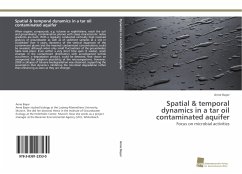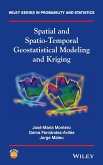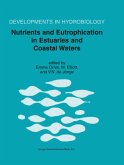When organic compounds, e.g. toluene or naphthalene, reach the soil and groundwater, contamination plumes with steep characteristic redox gradients are built. With a regularly conducted vertically high resolved analysis of groundwater as well as of sediment samples at a site in Düsseldorf over 4 years, dynamics of the vertical expansion of the contaminant plume and the maximal contaminant concentrations could be revealed, although when only small fluctuations of the groundwater table took place. Even within a very short time span (2 weeks), small changes in the contaminant distribution with accompanied sulfide occurrence, a degradation product, could be detected, that shows an unexpected fast adaption possibility of the microorganisms. However, 2008 a collapse of toluene biodegradation was observed, supporting the assumption that dynamics inhibiting the microbial degradation rather than enhancing as soon as they are stronger.
Bitte wählen Sie Ihr Anliegen aus.
Rechnungen
Retourenschein anfordern
Bestellstatus
Storno








